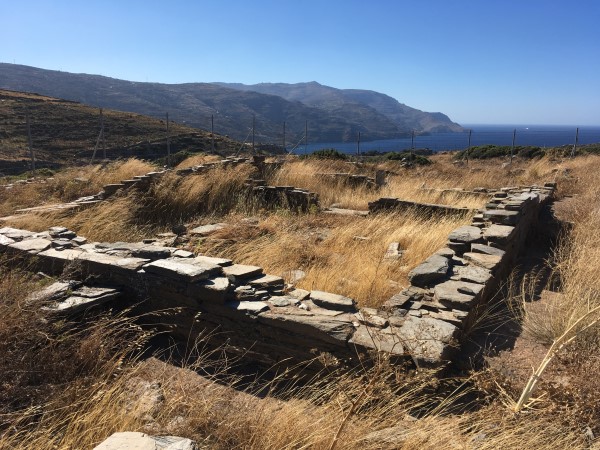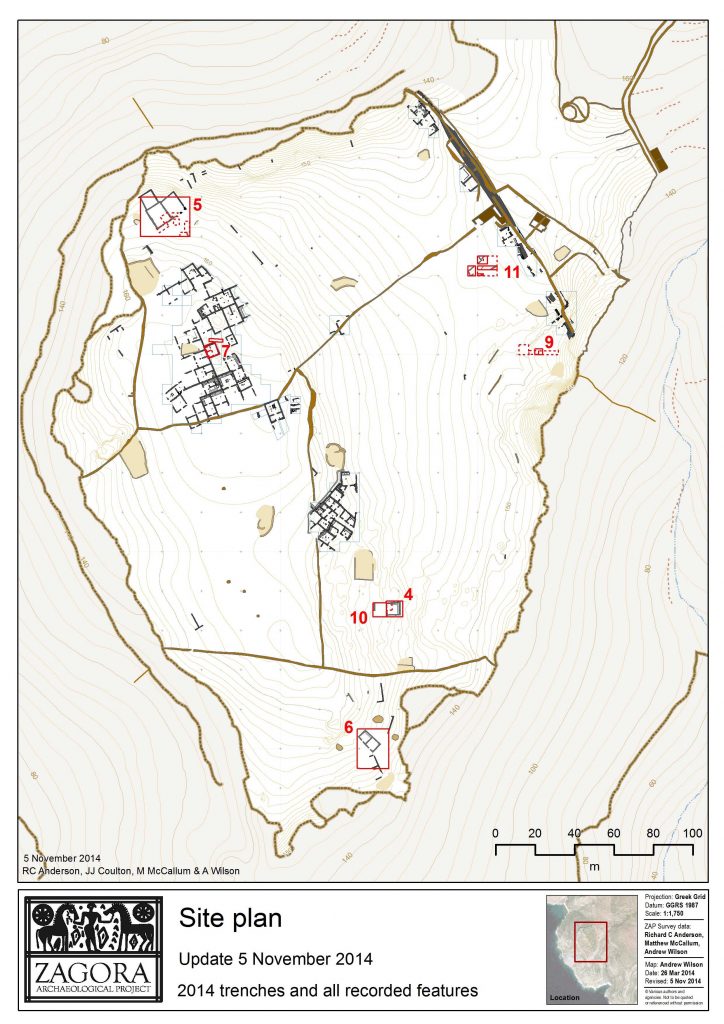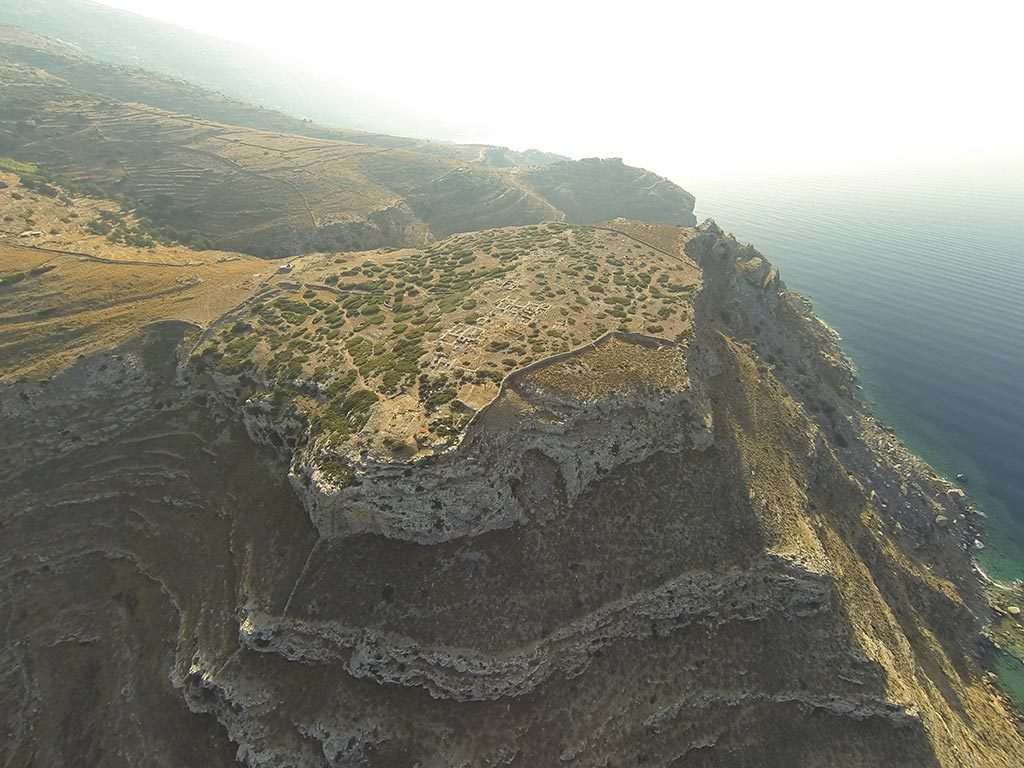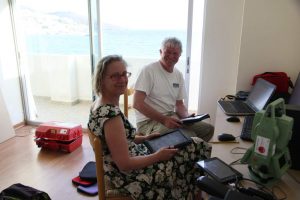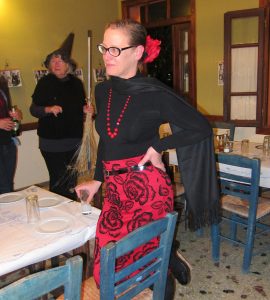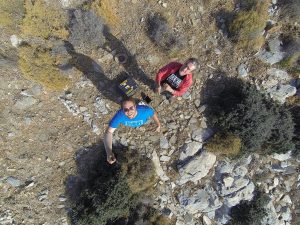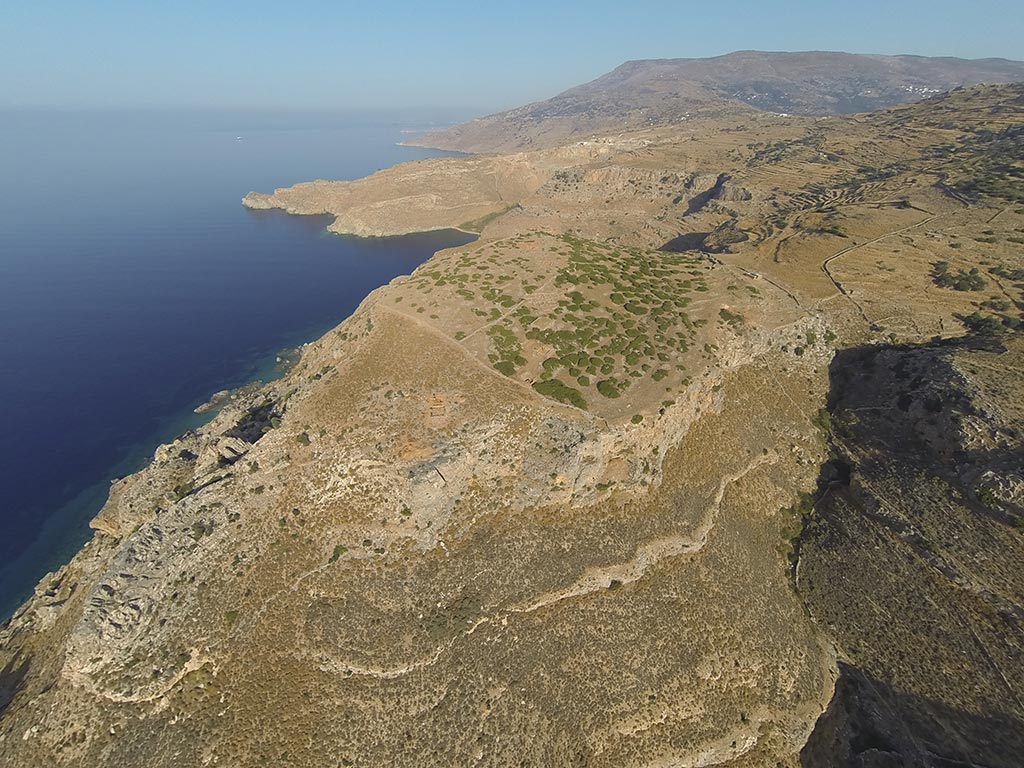This post – the final instalment in a two-part series which draws on a conversation I had with two of the project’s co-directors, Associate Professor Lesley Beaumont and Dr Paul Donnelly – looks at their hopes for the 2019 excavation program. Read part one here.
The current archaeological program extends beyond the sanctuary and domestic units to investigate the economy of Zagora more closely. How did the people live? How did they survive at Zagora? What was the structure behind the agricultural economy, the manufacturing economy and animal husbandry practices? With what other communities were the Zagorans in contact? With whom did they exchange goods?
Survey and excavations of the recent decade
To start to answer these questions, in 2012 the team undertook geophysical analysis. Through Ground Penetrating Radar (GPR), resistivity and magnetometry surveys, they were able to get a better sense of what lay below the surface. These surface survey techniques enabled the team to identify areas high in surface finds.
Excavations since then have focused on communal areas such as the entrance area to Zagora, just within the fortification wall’s gate, and on areas with high numbers of artefacts – in particular, sherds (pottery fragments) and metal slag (which provides evidence of industrial work).
The 2013 and 2014 dig seasons focused on the results of the 2012 reconnaissance. Eleven test trenches were excavated across the site. Further surveys were undertaken across the surrounding landscape to try and pinpoint any other areas with concentrations of Early Iron Age artefacts.
Test trench 11 quickly proved to be particularly interesting. The team found evidence of a wide road surface which led towards what appears to be an industrial feature. This is significant as few access routes have been identified anywhere else within the Zagora settlement, and the possible industrial feature has the potential to answer some of our questions on the economy and manufacturing production.
Unfortunately, the 2014 field season ended before excavations could be completed. Test Trench 11 was backfilled and patiently waited for the 2019 season.

However, Zagora wasn’t totally abandoned by ZAP between 2014 and 2019. A small field season, led by Dr Hugh Thomas, was undertaken in 2017 focusing on infrared imaging across the site and some of the surrounding landscapes in order to detect subsurface remains.
Aims of the current season
The 2019 season has been informed by the results of all the 1967–1974 excavations and the 2012–2017 excavation, survey, geophysical and infrared imaging work.
Importantly, in 2014 and 2015, the exposed architectural remains of the site underwent state-of-the-art conservation thanks to site conservation specialist Dr Stephania Chlouveraki (you can read more about her work here. ZAP’s commitment to the preservation and presentation of Zagora is deeply felt and this aspect of the project is very much at the forefront of the co-directors’ objectives.
The directors have approached the 2019 season strategically. Our focus for this season is on continuing the excavation of Trench 11 and ground-truthing the results of the 2017 infrared imaging and 2012 magnetometer survey.
Anomalies were identified in both the infrared imaging project and the magnetometer survey. Trenches have now been opened in both the areas where these irregularities were identified, and their secrets will soon be revealed! It’s early days yet, but we hope find remains that will further inform us on the ‘industrial’ activities which may have taken place in this part of the settlement.

Keep up to date with the site on our Instagram: @zagora_archaeological_project
